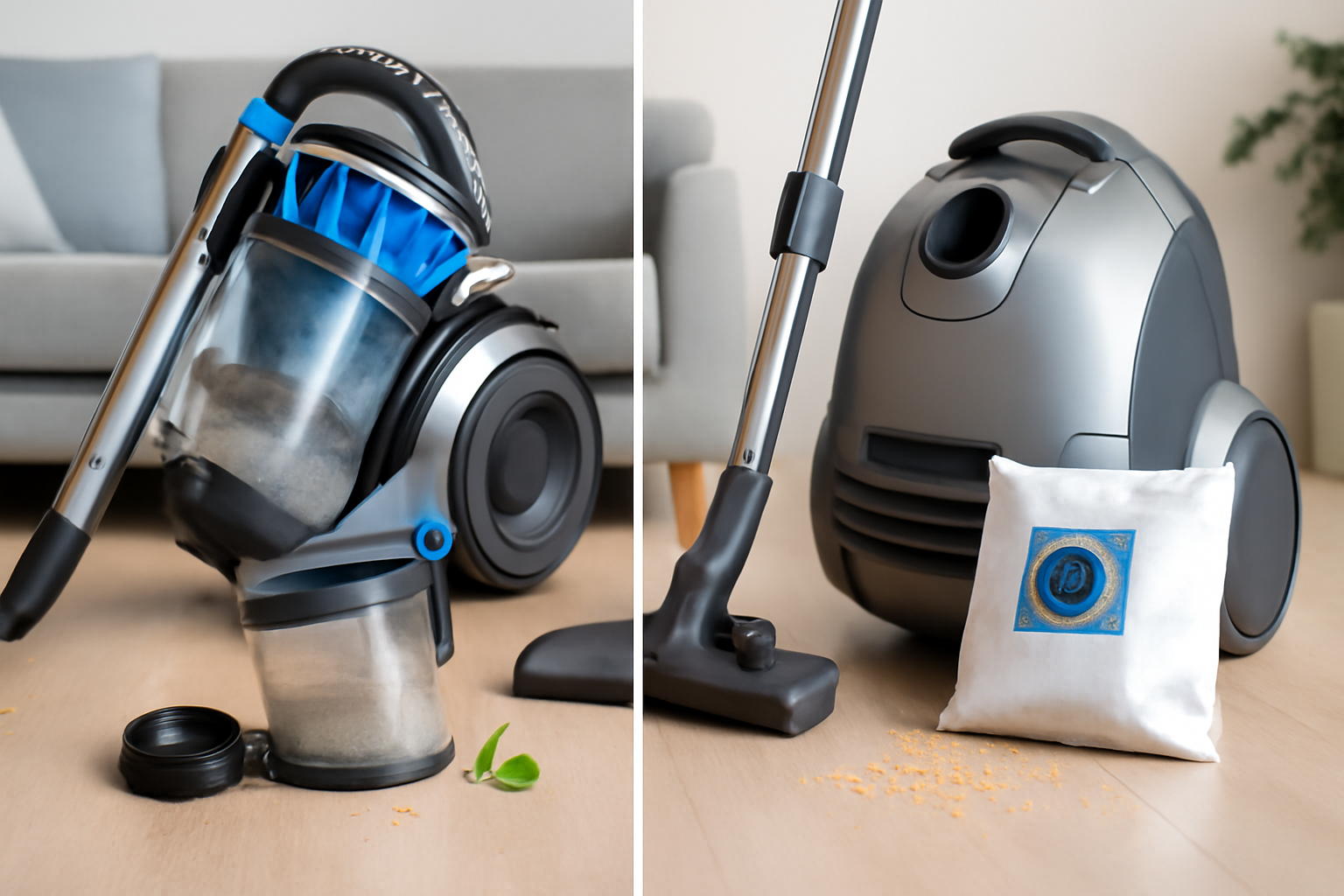Bagless vs. Bagged Vacuums: Two Different Ways to Clean
 When it comes to choosing a vacuum cleaner, one of the biggest decisions is whether to go for a bagged vacuum or a bagless vacuum. Both types have their advantages and disadvantages, and the best choice depends on your cleaning needs. This article will break down the differences between the two and help you decide which is right for you.
When it comes to choosing a vacuum cleaner, one of the biggest decisions is whether to go for a bagged vacuum or a bagless vacuum. Both types have their advantages and disadvantages, and the best choice depends on your cleaning needs. This article will break down the differences between the two and help you decide which is right for you.
1. What Are Bagged Vacuums?
Bagged vacuums collect dust, dirt, and debris in a disposable bag. Once the bag is full, it can be removed and replaced. These vacuums are typically designed to trap fine particles and allergens, making them a good choice for households with allergies.
Advantages of Bagged Vacuums:
Hygienic: Since the bag seals the dirt inside, there’s less chance of dust escaping when changing the bag.
Effective Filtration: Bagged vacuums often have better filtration systems, trapping more dust and allergens.
Larger Capacity: Bags can hold more debris, so you don’t need to empty them as frequently.
For more insights into filtration systems, check out The American Cleaning Institute, which provides expert advice on vacuum technology.
2. What Are Bagless Vacuums?
Bagless vacuums, on the other hand, collect debris in a built-in bin or container. The dirt is deposited directly into the container, which can be emptied once full. These vacuums are designed to be more convenient and cost-effective since there’s no need to purchase replacement bags.
Advantages of Bagless Vacuums:
Cost-Effective: No need to buy replacement bags, saving you money in the long run.
Convenience: You can see when the container is full, making it easier to know when to empty it.
Environmentally Friendly: With no bags to throw away, bagless vacuums are a more eco-friendly option.
Explore more about eco-friendly cleaning options at The Environmental Protection Agency (EPA).
3. Bagged vs. Bagless: Which is Better for You?
For Allergy Sufferers: Bagged vacuums may be the better option because they trap allergens in the bag, preventing them from escaping back into the air.
For Convenience: Bagless vacuums are easier to empty and don’t require you to buy replacement bags, making them more convenient for many users.
For Larger Homes: Bagged vacuums may be more suited for large homes with extensive carpeted areas, as they tend to hold more debris and require fewer emptying sessions.
4. Maintenance and Costs
Bagged Vacuums: Although the bags need to be replaced periodically, they require less maintenance overall. You don’t have to worry about cleaning the dustbin after every use.
Bagless Vacuums: While more convenient, bagless vacuums require more regular cleaning of the dustbin and filter to maintain optimal suction.
5. Conclusion
Both bagged and bagless vacuums have their benefits. If you want better filtration and don’t mind buying replacement bags, a bagged vacuum might be the best choice for you. However, if you prefer convenience and want to avoid the cost of replacement bags, a bagless vacuum is a great option.
For more information on choosing the best vacuum for your home, visit www.lxvacuum.com for expert reviews and recommendations.

















